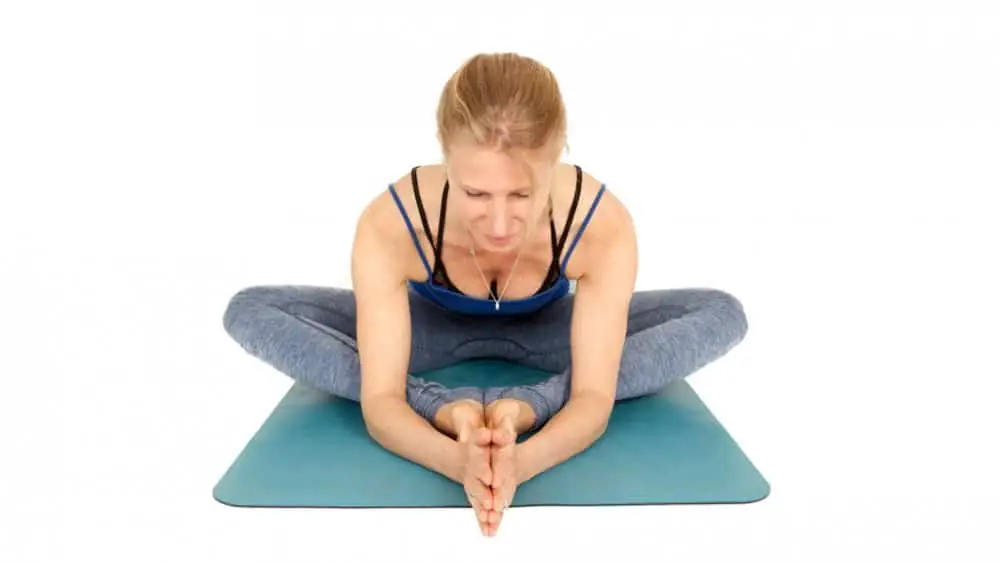We all have that one friend who’s into yoga. It always seems so centered and happy, and it can be hard not to get jealous of its inner peace. But don’t worry—you can find your happy place through the wonders of chakra yoga.
This method uses classical chakra yoga poses such as boat pose yoga to deepen the mind-body connection and leave you feeling refreshed, rejuvenated, and ready to take on whatever life throws your way.
What Is Chakra Yoga?
Chakra yoga is based on the idea that our bodies contain seven energy centers called chakras. These chakras are like spinning wheels of energy that keep us balanced and whole. In Sanskrit, “chakra” means “wheel,” If you can picture a wheel with its spokes radiating out from a central hub, this will help you visualize each of these seven energy centers.
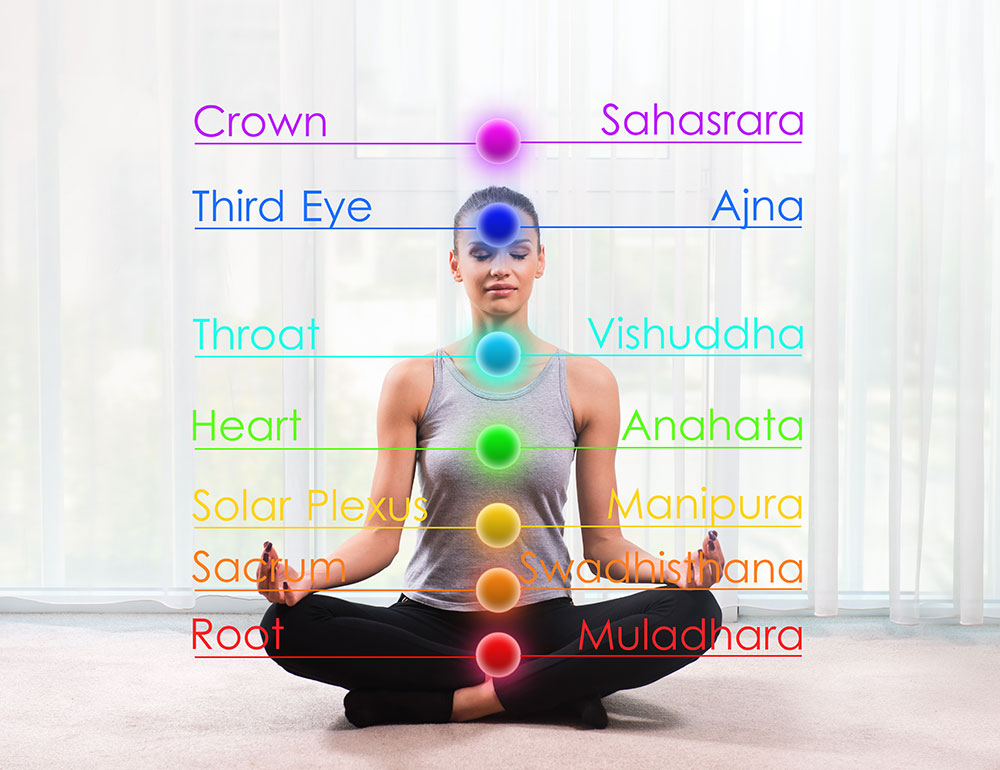
Each one is associated with different parts of our bodies and specific types of emotions and ideas. To keep ourselves healthy and at peace, we need to ensure our chakras are balanced and flowing smoothly. Chakra yoga teaches how to balance these seven energy centers to achieve radiant health and wellbeing.
In this article, we will mainly focus on the root, solar plexus, and heart chakras, including their poses.
Types of Chakra Yoga
Root Chakra
This is the first chakra, located at the base of the spine and associated with the color red. It governs security, stability, and basic needs. The root chakra is related to how we interact with our physical environment and how grounded we feel in our bodies.
Solar Plexus Chakra
The third chakra, or solar plexus chakra, is located in the upper abdomen at the navel level. It is known as the Manipura chakra, which means “lustrous gem.” Known as the seat of power, this chakra is linked to personal power, self-esteem, identity, and self-confidence. The solar plexus chakra is associated with the color yellow and the fire element.
Heart Chakra
The heart chakra is called Anahata in Sanskrit. Located at the center of your chest, right where the sternum meets, this chakra connects us to ourselves and others through love (and not just romantic love). Anahata translates to “unhurt,” which refers to an uncorrupted heart that is open and giving without expectation, judgment, or fear of being hurt.
Benefits of Chakra Yoga
Increased flexibility – To perform a large variety of yoga poses, you need to have an increased level of flexibility. Chakra yoga is an excellent way to increase your flexibility because the poses help stretch and lengthen the muscles in your body.
Increased muscle strength and tone – The poses you do during this type of yoga also help strengthen and build lean muscle mass throughout the body. When you perform certain poses, you will be using your body weight as resistance which helps strengthen and tone muscles.
Stress relief – Yoga, in general, can be very beneficial for relieving stress. When you practice yoga, you focus your attention on your breath and poses, allowing you to relax your mind from daily worries or problems. Chakra yoga specifically focuses on the areas of the body that tend to hold tension when we are stressed out or anxious.
Weight reduction – Blocked Chakras can cause you to become overweight due to an overproduction of certain hormones. When you practice this type of yoga, you stimulate the endocrine system, which regulates hormone production and causes your metabolism to speed up. This can lead to weight reduction when done regularly.
Cardio and circulatory health – Chakra yoga uses different postures and breathing techniques that work together to increase the amount of oxygen delivered to the heart. This helps strengthen the heart muscle, boost stamina, and generally improve the overall health of your cardiovascular system.
Chakra Yoga for Beginners: Warm-up
Chakra yoga practice requires a few minutes of warm-up before starting the asana series. Warm-up exercises create heat in the body, make it flexible, help prevent injuries and prepare you for advanced postures.
A simple breathing technique to warm up is known as ujjayi pranayama. This also helps to focus your thoughts on the practice that is about to come.
10 Chakra Yoga Poses
Yoga poses (asanas) are often used in conjunction with meditation and controlled breathing to achieve this balance. As you move through various postures and sequences while focusing your mind on specific aspects of your body or breathing, you can help realign each chakra with its corresponding element or quality.
Root chakra yoga poses:
1. Mountain Pose (Tadasana)
Mountain pose might seem like “simply standing,” but a lot is going on. “Tada” means a mountain; that’s where the name comes from. It takes the foundation of all the other positions. The more stability you have in your mountain pose, the easier the other poses will be to learn.
How to: Stand with your feet together, feeling your connection to the earth. Imagine a straight line running up the center of your body, from the base of your spine to the crown of your head. Lift your chest and lengthen your neck, drawing your chin back slightly so that your ears are in line with your shoulders.
Gaze straight ahead with soft eyes. Breathe deeply for five breaths or longer, taking the opportunity to ground yourself and clear the mind before transitioning into other poses.
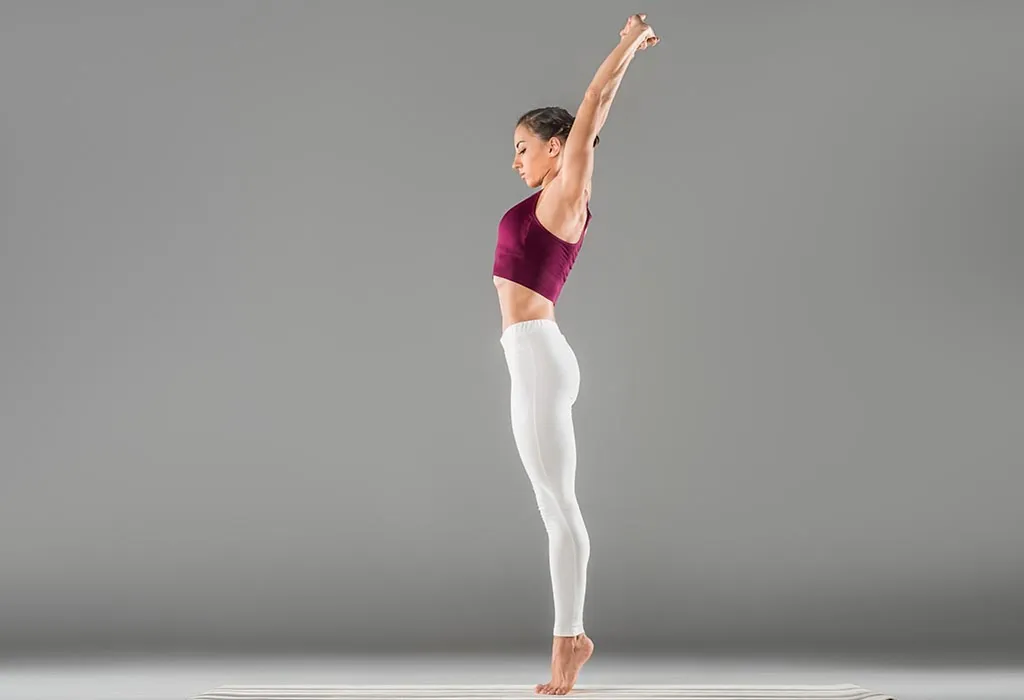
2. Standing Forward Bend (Uttanasana)
This pose is great for stretching out your back and hamstrings. It also helps calm you down and relieve stress. You can do this pose with your legs straight or bend your knees to make it easier on your back.
How to: From standing, bend at the hips and bring your fingers to touch the floor in front of you. If you’re unable to reach all the way down, place your hands on a yoga block or two. Slowly walk out of your hands until they’re directly under your shoulders.
Then begin to straighten out the legs by pressing into the balls of the feet, making sure not to lock out the knees. Bring one leg back into a lunge position if you wish to deepen this pose and create some extra space for the heart chakra. Hold for five breaths or longer.
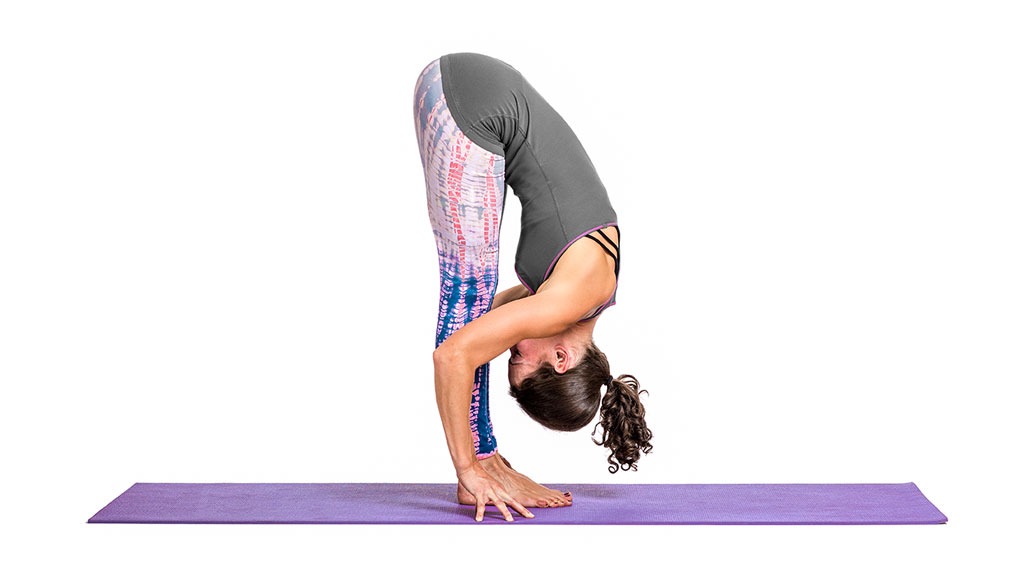
3. Half Moon Pose (Ardha Chandrasana)
The half-moon pose is great for balance and works your legs, specifically the thighs and calves. This pose also stretches the groins, chest, and shoulders, stimulates the abdominal organs, lungs, and thyroid, and relieves stress. Avoid this pose if you are new to yoga or have high blood pressure or migraine issues.
How to: Start from a standing position and bring your hands down to touch the floor in front of you. Step one foot back, keeping the other leg straight. Lift your chest up toward the ceiling as you bring your back leg off the floor. Keep your arms straight and reach up toward the ceiling. Hold for three to five breaths and repeat on the other side.
Solar Plexus chakra poses:
4. Boat Pose (Navasana)
This pose works to strengthen the core and abdominal muscles while also improving balance, boosting our confidence and self-esteem. Navasana gives us the feeling of being grounded while helping us connect with what lies ahead—it’s a great posture for those who tend to get stuck in the past or feel insecure about the future.
How to: Begin by sitting on your mat with your legs together. Lean back slightly and raise your legs so that your body forms a V-shape. Spread your arms out at shoulder level and point your fingers toward the ceiling. If this is difficult for you, bend your knees and keep them together as you raise them up, keeping your arms at shoulder level. After a few breaths in this position, come forward slightly to rest and repeat.

5. Camel Pose (Ustrasana)
This pose gets its name from ustra, which means camel in Sanskrit. It opens up the chest and pelvis while strengthening the back muscles. It also stretches the abdomen and stimulates the digestive system.
How to: Kneel on the floor with the knees hip-width apart and your thighs at right angles to the floor. Rest your hands on the back of your pelvis, fingers pointing down. Press your shins and the tops of your feet into the floor firmly. Inhale, lift your heart and slide your shoulder blades down; don’t squeeze them together at this point. Exhale and lean back, keeping upper arms close to the body and drawing lower front ribs in; keep arms parallel to each other.
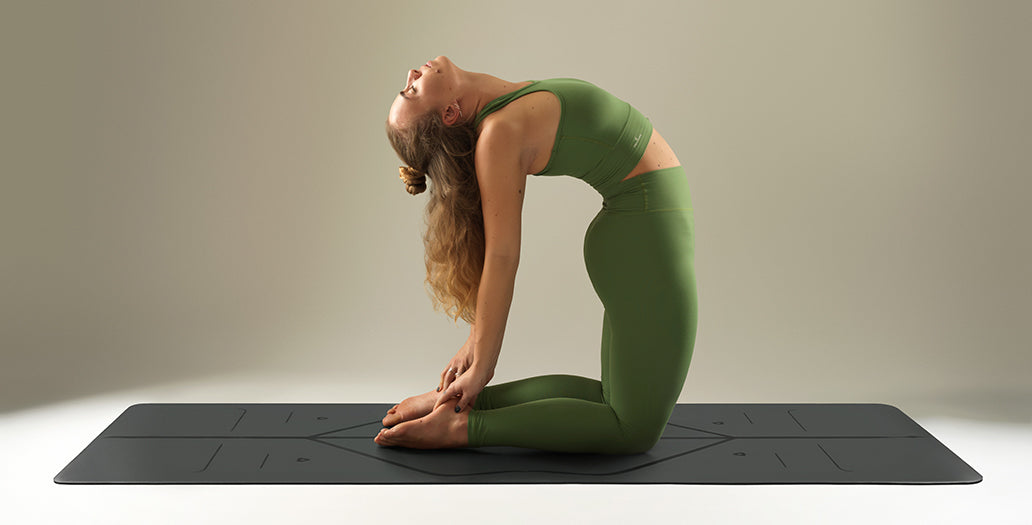
6. Bow Pose (Dhanurasana)
In this pose, you are lying on your belly while bending your knees and holding onto your ankles to lift your chest off the floor. This pose stretches the solar plexus area and compresses organs in that region. It’s also very energizing and helps open up the chest to increase breathing capacity.
How to: To begin, lie on your belly with your hands at your sides, palms up. Bend your knees, bringing the heels as close to your body as possible. With an exhale, reach back with both hands and grab the outside of each ankle. Inhale and lift your head and chest off the mat and pull back gently on the ankles, lifting the thighs off the floor.
Keep lifting through the chest and press down through the feet until you feel a nice stretch in the front torso. You can stay here for five breaths or hold for up to 60 seconds. Release the grip on the ankles with an exhale and slowly roll back down to lie flat on your belly.
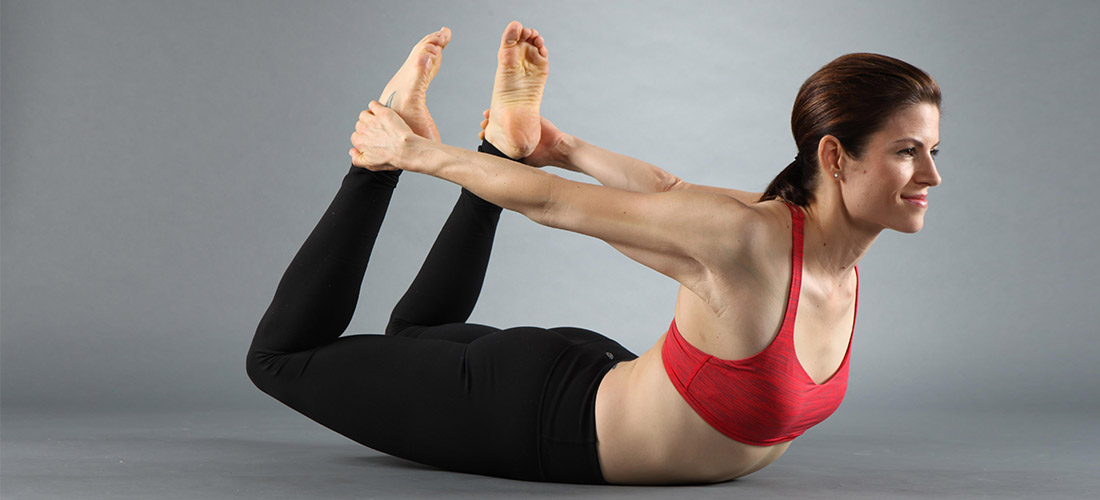
Yoga Poses for Heart Chakra:
7. Cat Pose (Marjaryasana)
This pose is a great way to warm up the back muscles for other heart-opening postures. It will stretch and open up your spine as well as strengthen your core. It also allows you to gently massage the internal organs and aids digestion.
How to: Begin on your hands and knees and wrists beneath the shoulders, and knees under the hips. Inhale, then exhale as you round your spine toward the ceiling. Draw belly up toward spine and tuck tailbone under; gaze toward navel or third eye (between eyebrows).
Inhale, then exhale as you release the cat pose by dropping your belly toward the mat while raising your head and tailbone toward the ceiling. Repeat several times, moving in rhythm with your breath.

8. Cow Pose (Bitilasana)
This pose is a great warm-up for your spine that can be incorporated into almost any yoga sequence. But it also works to open up your chest and lungs, which makes it a fantastic choice for boosting circulation in the heart chakra. It also helps to lengthen the back of your body, which can counteract the effects of too much time spent sitting in chairs (like we do at work!).
How to: Begin on your hands and knees with your shoulders stacked over your wrists and your hips over your knees. Bring your shoulder blades down toward the ground to create space through the tops of your shoulders. This will allow you to lift your chest away from the floor without crunching into the lower part of your spine.
Inhale as you arch into cow pose, pressing down through all ten fingertips and lifting through the top of your head. Exhale as you press back into the cat pose by releasing into a rounded spinal position (without collapsing). Repeat 5 times or for 30 seconds.

9. Bridge Pose (Setu Bandha Sarvangasana)
Bridge pose is an energizing yet soothing posture that can help you open up your lungs and throat. It’s especially good for those who sit at a desk all day, as it stretches the chest and neck and can relieve tension in the shoulders and back. The pose also helps to calm the mind and alleviate stress.
How to: Begin by lying on your back with your knees bent, feet hip-width apart and close to your buttocks with your arms by your sides. Exhale and press your feet into the floor as you lift your hips.
Clasp both hands under your body—you can use a strap if you’re unable to reach—and roll onto the top of your shoulders to open across the front of the chest. Lift your hips as high as possible without compromising the spine’s natural curve.

10. Corpse Pose (Savasana)
The Corpse pose is one of the most important and restorative poses in yoga. You can use it at the beginning or end of yoga practice or simply whenever you want to take several minutes to slow down and release tension from your body. The corpse pose can help relax the nervous system, calm the mind and reduce stress. It also helps alleviate fatigue and insomnia, improves posture, and relieves muscle soreness.
How to: Lie flat on your back, legs straight out and arms at your sides. Close your eyes, and let your muscles go limp. Take a few breaths to relax each part of your body—toes, calves, thighs, belly—until your entire body is relaxed. Stay in the pose for up to 10 minutes.

Conclusion
Yoga offers us the opportunity to strengthen our bodies, improve our energy flow and enhance our lives. A big part of this comes from balancing our chakras, which are centers of energy within our bodies. These seven energy centers are connected to different parts of our lives, and when they’re on track, we feel whole.
When they’re out of balance, we may feel stressed out or out-of-sorts. While there are many ways to balance your chakras, doing chakra yoga poses is one method that can bring these centers into better alignment. So, start your chakra journey today!
